 Facebook
Facebook
 X
X
 Instagram
Instagram
 TikTok
TikTok
 Youtube
Youtube
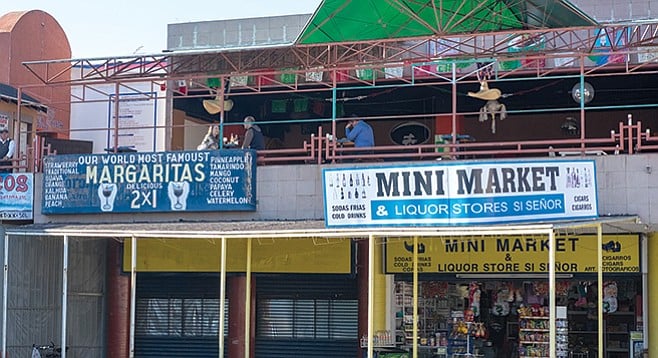
“Tengo que ir hacer laundry, then I have to study en la biblioteca,” I’m paraphrasing what the Latina students in my college sounded like. My first real encounter with Spanglish speakers was in Minnesota. Spanglish frustrated me. I kept telling them to speak one language or the other, not to skip between both.
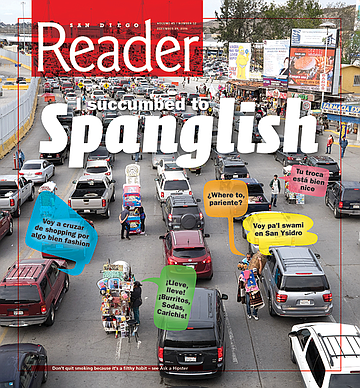
I went to a small all-men private university that was mostly white; the women’s campus was five miles away. I was the only Mexican in my class. The rest of the Latinos were international students from South or Central America. The Latina students, on the other campus, were mostly from Bellflower, California (south Los Angeles), with diverse mixed backgrounds (Puerto Rico, Guatemala, Nicaragua, and more). Just like me, they were recruited into the college to diversify the student body. (Despite this, Latinos were less than 3 percent.)
“Este zinc es para el mappeador only,” read a sign in the back of a burrito shop I used to frequent in Venice Beach. After college I moved to Los Angeles. Despite encountering many Spanglish speakers, I still strictly spoke one language or the other.
For Spanglish-speaking people (especially Californians) it is clear that the previous phrase means “this sink is for the mop only.” Purely Spanish-speaking people might not understand what it means, and many would poke fun at the mix of the two languages.
Mappeador is not a Spanish word. The closest to a real Spanish word is mapeador, which means mapper or cartographer. The real word for a mop is trapeador, which derives from the word trapo, which means “rag.” But trapeador in a Spanglish mind sounds like someone who sets up traps.
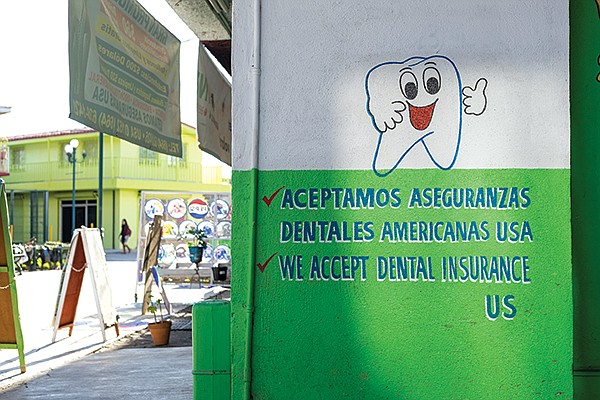
Spanglish speakers frequently misspell the word sink to zinc (yes, like the element), because a zee in Spanish sounds like an ess in English. Only it is not a Spanish word.
It wasn’t until I moved to Tijuana and crossed the border daily that I started to understand the mind of a Spanglish speaker. The retail shop I worked at in San Diego had a Spanglish sign similar to the burrito shop: “Timer del sign afuera.” But it wasn’t only at the retail shop.

“Stops Relocated / Paradas Relocadas,” read a sign from MTS when they were renewing the trolley tracks back in April of 2015.
Relocadas is not a word. If anything, in proper Spanish, it would mean “the bus stops are extra crazy.”
Sometimes bad English gets translated into bad Spanish. A bilingual sign near the trolley tracks read: “No trespassing — Construction Personal Only” (should have been “Personnel”) which got translated to “No hay personal de constructión — Allanamiento solo.” In Spanish, this sign is simultaneously counter nonsensical and counter to its own aim. Translating it back to English it would render: “There is no construction personal — Break-ins only.”
San Diego butchers the Spanish language frequently, but Tijuana destroys both English and Spanish. It’s the city where I have seen the most spelling mistakes in both languages by restaurants (and their menus), billboards, and even official government information.

In Tijuana, a person doesn’t go to a fiesta; he or she “se va de par(t)y” (The tee is silent, possibly because “party,” spoken in American English, sounds like “pardy.” Sped up it sounds like “paw-ree” to a Spanish speaker.)
In Tijuana, clothes are not a la moda (Spanish for fashionable), clothes are fachon (fashion with a hard ch sound). Never mind that fashion is a noun, not an adjective. Spanglish doesn’t limit itself to rules.
In Tijuana, cottage cheese is known by its phonetic approximation carichis.
In Tijuana, if someone told me, “Voy p’al swami en San Ysidro,” I’d know that we’re going to cross the border for the swap meet (swami) in San Ysidro. (P’al is a colloquial contraction of para el — for “the.”)
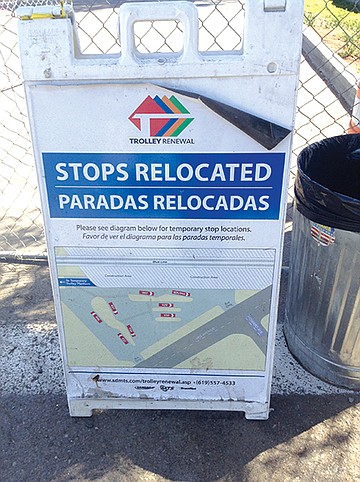
You never ask for a refresco as you would in other parts of Mexico, you say, “Dame una soda” (give me a soda). There’s no such thing as cinta adhesiva, there’s only el teip (adhesive tape). There are no peluquerías (barber shops), only barberías. And many businesses have proper names followed by an apostrophe; e.g., Tito’s Tacos, Mario’s Yonke, etc. The apostrophe does not exist in proper Spanish.
As hard as I resisted, at some point my brain refused to compartmentalize the two languages and the fusion commenced. I succumbed to Spanglish. Now every time I learn a Spanglish word, I absorb it into my vocabulary and cherish the discovery. But the grammar geek in me still hates printed spelling mistakes.
“I believe things are changing,” says Omar Pimienta, professor of Chicano Art Studies at San Diego City College. “The level of education of Chicano or Latino millennials is much greater than the previous generation, in numbers and in access to education. I believe more than 50 percent of high-school students in California are Latinos. Add the DREAMers, who are in the education system. But they also have to carry the heavy political load of fighting for their citizenship constantly… their identity is in limbo. And I mean that in a good way.”
DREAMers, named for President Obama’s Development, Relief, and Education for Alien Minors (DREAM) Act, are undocumented students brought to the United States as children and eligible for two-year deferments from the threat of deportation.
According to the California Department of Education, there were 3,360,562 Hispanics or Latinos enrolled in public schools, K–12, for the 2015–2016 year, accounting for 54 percent of students. Up 1.9 percent from the previous year, 78.5 percent of Latinos that started high school in 2010 finished it in 2014, accounting roughly for 42 percent of all graduates.
“They [Hispanics] are more conscious that they need to dominate English to articulate our problematics,” continues Pimienta. “But there’s a sense of pride, empowerment, and of appropriation with Spanglish in the Chicano identity. The people know that there’s nothing wrong with [Spanglish], though they constantly get called ‘pinches pochos’.”
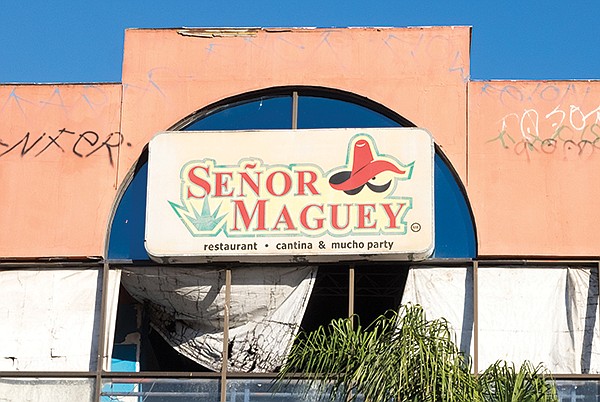
Pinches is an expletive used the way f---ing is used. Pocho is a term used by Mexicans to describe Chicanos or Mexican-Americans who lack fluency in Spanish. Though it began as a pejorative term, it has been embraced by tijuanenses to the extent that the city’s professional baseball team the Toros uses the hashtag #TodosSomosPochos (“#WeAre AllPochos”).
Pimienta, despite being Mexican-American, does not consider himself a full Chicano. Pimienta was born in Colonia Libertad, the neighborhood closest to the San Ysidro border crossing.
“The institution forces you to reject your culture, it forces assimilation. And to assimilate, you have to renegade everything, and the first thing you renegade is Spanish. And it is problematic because when they turn back to learn about their own culture, they don’t have the language anymore. So when they visit, people make fun of them — ‘Why doesn’t he speak Spanish if he is a moreno paísa (brown countryman)?’ What people ignore is that they went through an acculturation process.”
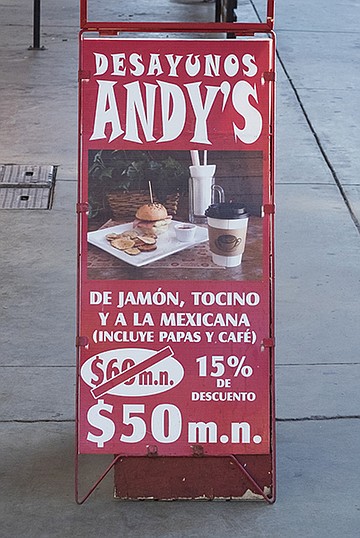
Asked about Spanglish in his own language, Pimienta answers, “There are words that I can never escape. For example, I’m never going to say ‘estacionamiento’ [‘parking’]; I’m going to say ‘metete al parking.’ Or ‘la troca’ [‘the truck’]: I’m never going to say ‘camioneta’; I’ll always say ‘troca.’”
“What about ‘lavabo’?” I interjected. Lavabo is the Spanish word for “sink.”
“What’s that? Oh… sink! Yeah, I don’t even question that one. There are many that I don’t question at all.”
Like most border people, Pimienta peppers his Spanish conversation with English seemingly without noticing. Something that I once despised, and now I do it regularly.
Spanglish is the main language of border crossers and to many others in California. It can be English with Spanish peppered throughout or the other way around. Many dialects exist. California Spanglish is not the same as Florida (mostly Miami), New York, Puerto Rico, or Texas Spanglish.
The term Spanglish is attributed to Puerto Rican journalist and poet Salvador Tió Montes de Oca. Tió first coined the word (originally espanglish or ingliñol) in 1948 in an essay titled “From the Bone Marrow: Theory of Spanglish.” Salvador Tió viewed Spanglish in a negative light, as a pollutant of both languages, very much the way I saw it at first.

“The conversations with my cousins were in English, with some Spanish,” Pimienta says. He has family in both countries.
“It was relatively easier to have family del otro lado [from the other side] back then. Operation Gatekeeper stopped the border dynamic of having families dispersed. Then the fall of the peso with [Mexican president Ernesto] Zedillo, though in reality it was Salinas [who] pushed a lot of people to the United States. Migratory politics became complex with Clinton.”
Operation Gatekeeper started in 1994 with the mission to “restore integrity and safety to the nation’s busiest border,” halting illegal immigration. Zedillo was the president of Mexico at the time when the Mexican economy plummeted, though Pimienta believes it was the fault of the previous president, Carlos Salinas.
“But now, with Obama’s massive deportations, we have a lot of children who came to live with their deported parents. It’s like a second wave of people with double citizenship.”
President Obama has deported more people than any other president — over 2.5 million. Many of them were deported to Tijuana.
“When I started writing at the beginning of the 2000s,” Pimienta recalls, “there was a bilingual movement. It was being studied a lot, the supposed English ‘contamination’ in Northern Mexico’s literature. My posture was to write poetry in a stylistic way, not necessarily focusing on a word, but on a theme. It has a bunch of pochismos [Spanglish terms], or a lot of code switching.”


“Tengo que ir hacer laundry, then I have to study en la biblioteca,” I’m paraphrasing what the Latina students in my college sounded like. My first real encounter with Spanglish speakers was in Minnesota. Spanglish frustrated me. I kept telling them to speak one language or the other, not to skip between both.

I went to a small all-men private university that was mostly white; the women’s campus was five miles away. I was the only Mexican in my class. The rest of the Latinos were international students from South or Central America. The Latina students, on the other campus, were mostly from Bellflower, California (south Los Angeles), with diverse mixed backgrounds (Puerto Rico, Guatemala, Nicaragua, and more). Just like me, they were recruited into the college to diversify the student body. (Despite this, Latinos were less than 3 percent.)
“Este zinc es para el mappeador only,” read a sign in the back of a burrito shop I used to frequent in Venice Beach. After college I moved to Los Angeles. Despite encountering many Spanglish speakers, I still strictly spoke one language or the other.
For Spanglish-speaking people (especially Californians) it is clear that the previous phrase means “this sink is for the mop only.” Purely Spanish-speaking people might not understand what it means, and many would poke fun at the mix of the two languages.
Mappeador is not a Spanish word. The closest to a real Spanish word is mapeador, which means mapper or cartographer. The real word for a mop is trapeador, which derives from the word trapo, which means “rag.” But trapeador in a Spanglish mind sounds like someone who sets up traps.

Spanglish speakers frequently misspell the word sink to zinc (yes, like the element), because a zee in Spanish sounds like an ess in English. Only it is not a Spanish word.
It wasn’t until I moved to Tijuana and crossed the border daily that I started to understand the mind of a Spanglish speaker. The retail shop I worked at in San Diego had a Spanglish sign similar to the burrito shop: “Timer del sign afuera.” But it wasn’t only at the retail shop.

“Stops Relocated / Paradas Relocadas,” read a sign from MTS when they were renewing the trolley tracks back in April of 2015.
Relocadas is not a word. If anything, in proper Spanish, it would mean “the bus stops are extra crazy.”
Sometimes bad English gets translated into bad Spanish. A bilingual sign near the trolley tracks read: “No trespassing — Construction Personal Only” (should have been “Personnel”) which got translated to “No hay personal de constructión — Allanamiento solo.” In Spanish, this sign is simultaneously counter nonsensical and counter to its own aim. Translating it back to English it would render: “There is no construction personal — Break-ins only.”
San Diego butchers the Spanish language frequently, but Tijuana destroys both English and Spanish. It’s the city where I have seen the most spelling mistakes in both languages by restaurants (and their menus), billboards, and even official government information.

In Tijuana, a person doesn’t go to a fiesta; he or she “se va de par(t)y” (The tee is silent, possibly because “party,” spoken in American English, sounds like “pardy.” Sped up it sounds like “paw-ree” to a Spanish speaker.)
In Tijuana, clothes are not a la moda (Spanish for fashionable), clothes are fachon (fashion with a hard ch sound). Never mind that fashion is a noun, not an adjective. Spanglish doesn’t limit itself to rules.
In Tijuana, cottage cheese is known by its phonetic approximation carichis.
In Tijuana, if someone told me, “Voy p’al swami en San Ysidro,” I’d know that we’re going to cross the border for the swap meet (swami) in San Ysidro. (P’al is a colloquial contraction of para el — for “the.”)

You never ask for a refresco as you would in other parts of Mexico, you say, “Dame una soda” (give me a soda). There’s no such thing as cinta adhesiva, there’s only el teip (adhesive tape). There are no peluquerías (barber shops), only barberías. And many businesses have proper names followed by an apostrophe; e.g., Tito’s Tacos, Mario’s Yonke, etc. The apostrophe does not exist in proper Spanish.
As hard as I resisted, at some point my brain refused to compartmentalize the two languages and the fusion commenced. I succumbed to Spanglish. Now every time I learn a Spanglish word, I absorb it into my vocabulary and cherish the discovery. But the grammar geek in me still hates printed spelling mistakes.
“I believe things are changing,” says Omar Pimienta, professor of Chicano Art Studies at San Diego City College. “The level of education of Chicano or Latino millennials is much greater than the previous generation, in numbers and in access to education. I believe more than 50 percent of high-school students in California are Latinos. Add the DREAMers, who are in the education system. But they also have to carry the heavy political load of fighting for their citizenship constantly… their identity is in limbo. And I mean that in a good way.”
DREAMers, named for President Obama’s Development, Relief, and Education for Alien Minors (DREAM) Act, are undocumented students brought to the United States as children and eligible for two-year deferments from the threat of deportation.
According to the California Department of Education, there were 3,360,562 Hispanics or Latinos enrolled in public schools, K–12, for the 2015–2016 year, accounting for 54 percent of students. Up 1.9 percent from the previous year, 78.5 percent of Latinos that started high school in 2010 finished it in 2014, accounting roughly for 42 percent of all graduates.
“They [Hispanics] are more conscious that they need to dominate English to articulate our problematics,” continues Pimienta. “But there’s a sense of pride, empowerment, and of appropriation with Spanglish in the Chicano identity. The people know that there’s nothing wrong with [Spanglish], though they constantly get called ‘pinches pochos’.”

Pinches is an expletive used the way f---ing is used. Pocho is a term used by Mexicans to describe Chicanos or Mexican-Americans who lack fluency in Spanish. Though it began as a pejorative term, it has been embraced by tijuanenses to the extent that the city’s professional baseball team the Toros uses the hashtag #TodosSomosPochos (“#WeAre AllPochos”).
Pimienta, despite being Mexican-American, does not consider himself a full Chicano. Pimienta was born in Colonia Libertad, the neighborhood closest to the San Ysidro border crossing.
“The institution forces you to reject your culture, it forces assimilation. And to assimilate, you have to renegade everything, and the first thing you renegade is Spanish. And it is problematic because when they turn back to learn about their own culture, they don’t have the language anymore. So when they visit, people make fun of them — ‘Why doesn’t he speak Spanish if he is a moreno paísa (brown countryman)?’ What people ignore is that they went through an acculturation process.”

Asked about Spanglish in his own language, Pimienta answers, “There are words that I can never escape. For example, I’m never going to say ‘estacionamiento’ [‘parking’]; I’m going to say ‘metete al parking.’ Or ‘la troca’ [‘the truck’]: I’m never going to say ‘camioneta’; I’ll always say ‘troca.’”
“What about ‘lavabo’?” I interjected. Lavabo is the Spanish word for “sink.”
“What’s that? Oh… sink! Yeah, I don’t even question that one. There are many that I don’t question at all.”
Like most border people, Pimienta peppers his Spanish conversation with English seemingly without noticing. Something that I once despised, and now I do it regularly.
Spanglish is the main language of border crossers and to many others in California. It can be English with Spanish peppered throughout or the other way around. Many dialects exist. California Spanglish is not the same as Florida (mostly Miami), New York, Puerto Rico, or Texas Spanglish.
The term Spanglish is attributed to Puerto Rican journalist and poet Salvador Tió Montes de Oca. Tió first coined the word (originally espanglish or ingliñol) in 1948 in an essay titled “From the Bone Marrow: Theory of Spanglish.” Salvador Tió viewed Spanglish in a negative light, as a pollutant of both languages, very much the way I saw it at first.

“The conversations with my cousins were in English, with some Spanish,” Pimienta says. He has family in both countries.
“It was relatively easier to have family del otro lado [from the other side] back then. Operation Gatekeeper stopped the border dynamic of having families dispersed. Then the fall of the peso with [Mexican president Ernesto] Zedillo, though in reality it was Salinas [who] pushed a lot of people to the United States. Migratory politics became complex with Clinton.”
Operation Gatekeeper started in 1994 with the mission to “restore integrity and safety to the nation’s busiest border,” halting illegal immigration. Zedillo was the president of Mexico at the time when the Mexican economy plummeted, though Pimienta believes it was the fault of the previous president, Carlos Salinas.
“But now, with Obama’s massive deportations, we have a lot of children who came to live with their deported parents. It’s like a second wave of people with double citizenship.”
President Obama has deported more people than any other president — over 2.5 million. Many of them were deported to Tijuana.
“When I started writing at the beginning of the 2000s,” Pimienta recalls, “there was a bilingual movement. It was being studied a lot, the supposed English ‘contamination’ in Northern Mexico’s literature. My posture was to write poetry in a stylistic way, not necessarily focusing on a word, but on a theme. It has a bunch of pochismos [Spanglish terms], or a lot of code switching.”
Comments